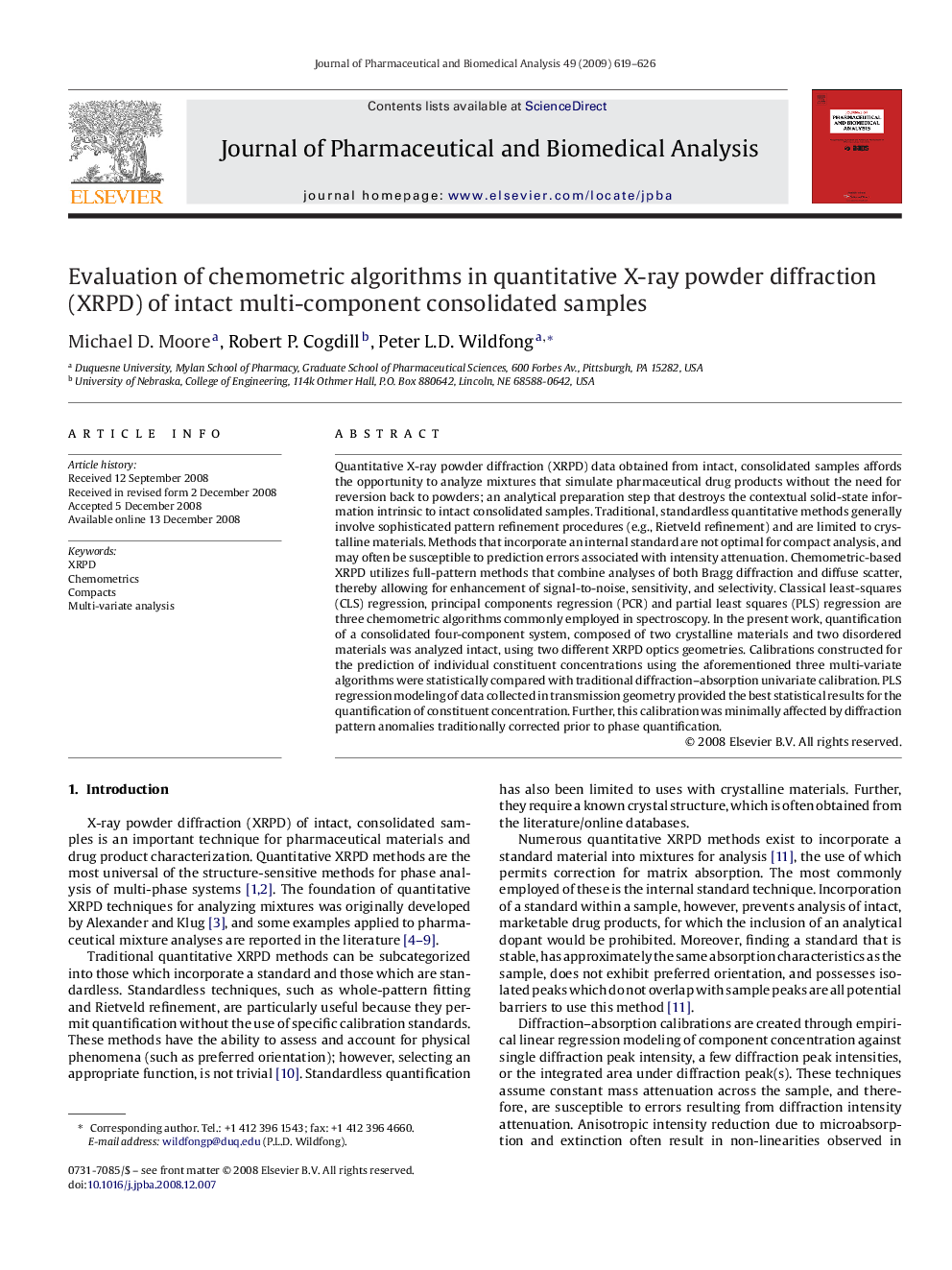| کد مقاله | کد نشریه | سال انتشار | مقاله انگلیسی | نسخه تمام متن |
|---|---|---|---|---|
| 10553639 | 967888 | 2009 | 8 صفحه PDF | دانلود رایگان |
عنوان انگلیسی مقاله ISI
Evaluation of chemometric algorithms in quantitative X-ray powder diffraction (XRPD) of intact multi-component consolidated samples
دانلود مقاله + سفارش ترجمه
دانلود مقاله ISI انگلیسی
رایگان برای ایرانیان
کلمات کلیدی
موضوعات مرتبط
مهندسی و علوم پایه
شیمی
شیمی آنالیزی یا شیمی تجزیه
پیش نمایش صفحه اول مقاله

چکیده انگلیسی
Quantitative X-ray powder diffraction (XRPD) data obtained from intact, consolidated samples affords the opportunity to analyze mixtures that simulate pharmaceutical drug products without the need for reversion back to powders; an analytical preparation step that destroys the contextual solid-state information intrinsic to intact consolidated samples. Traditional, standardless quantitative methods generally involve sophisticated pattern refinement procedures (e.g., Rietveld refinement) and are limited to crystalline materials. Methods that incorporate an internal standard are not optimal for compact analysis, and may often be susceptible to prediction errors associated with intensity attenuation. Chemometric-based XRPD utilizes full-pattern methods that combine analyses of both Bragg diffraction and diffuse scatter, thereby allowing for enhancement of signal-to-noise, sensitivity, and selectivity. Classical least-squares (CLS) regression, principal components regression (PCR) and partial least squares (PLS) regression are three chemometric algorithms commonly employed in spectroscopy. In the present work, quantification of a consolidated four-component system, composed of two crystalline materials and two disordered materials was analyzed intact, using two different XRPD optics geometries. Calibrations constructed for the prediction of individual constituent concentrations using the aforementioned three multi-variate algorithms were statistically compared with traditional diffraction-absorption univariate calibration. PLS regression modeling of data collected in transmission geometry provided the best statistical results for the quantification of constituent concentration. Further, this calibration was minimally affected by diffraction pattern anomalies traditionally corrected prior to phase quantification.
ناشر
Database: Elsevier - ScienceDirect (ساینس دایرکت)
Journal: Journal of Pharmaceutical and Biomedical Analysis - Volume 49, Issue 3, 5 April 2009, Pages 619-626
Journal: Journal of Pharmaceutical and Biomedical Analysis - Volume 49, Issue 3, 5 April 2009, Pages 619-626
نویسندگان
Michael D. Moore, Robert P. Cogdill, Peter L.D. Wildfong,